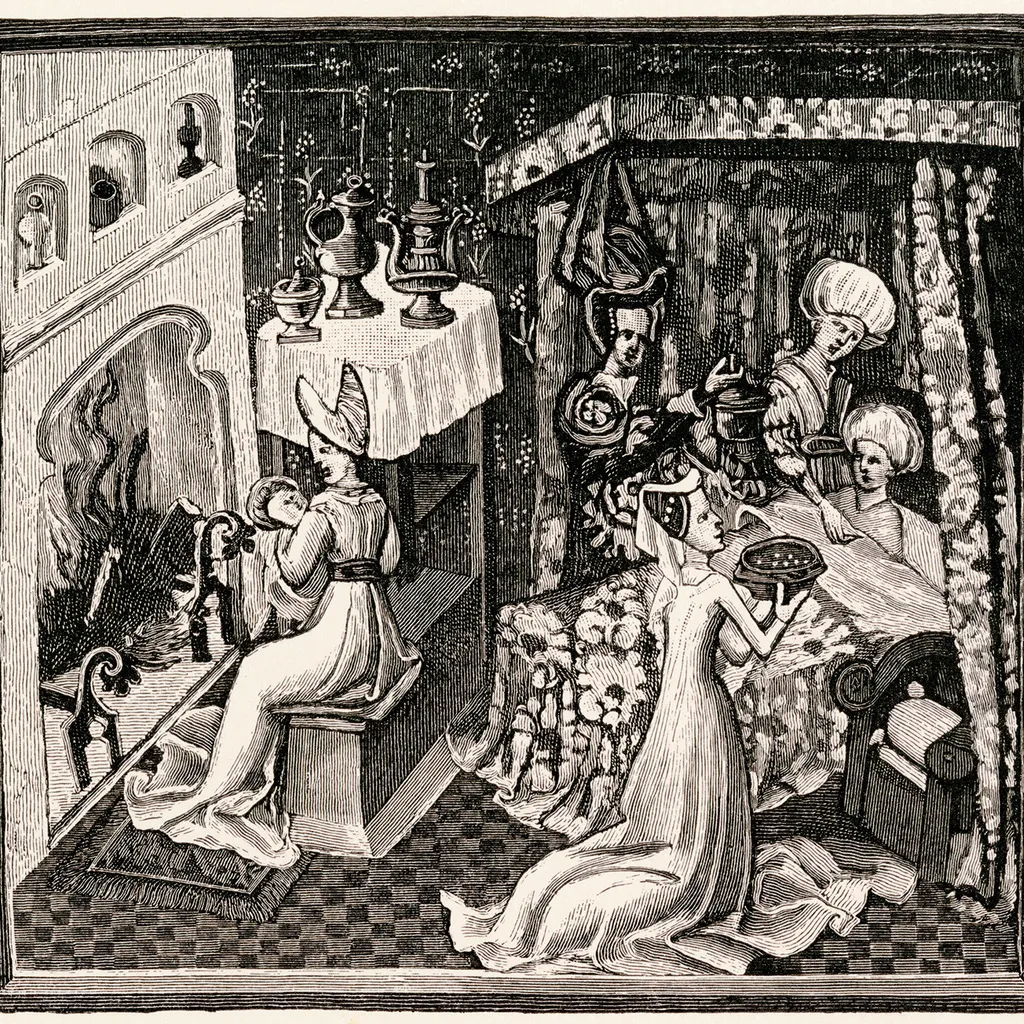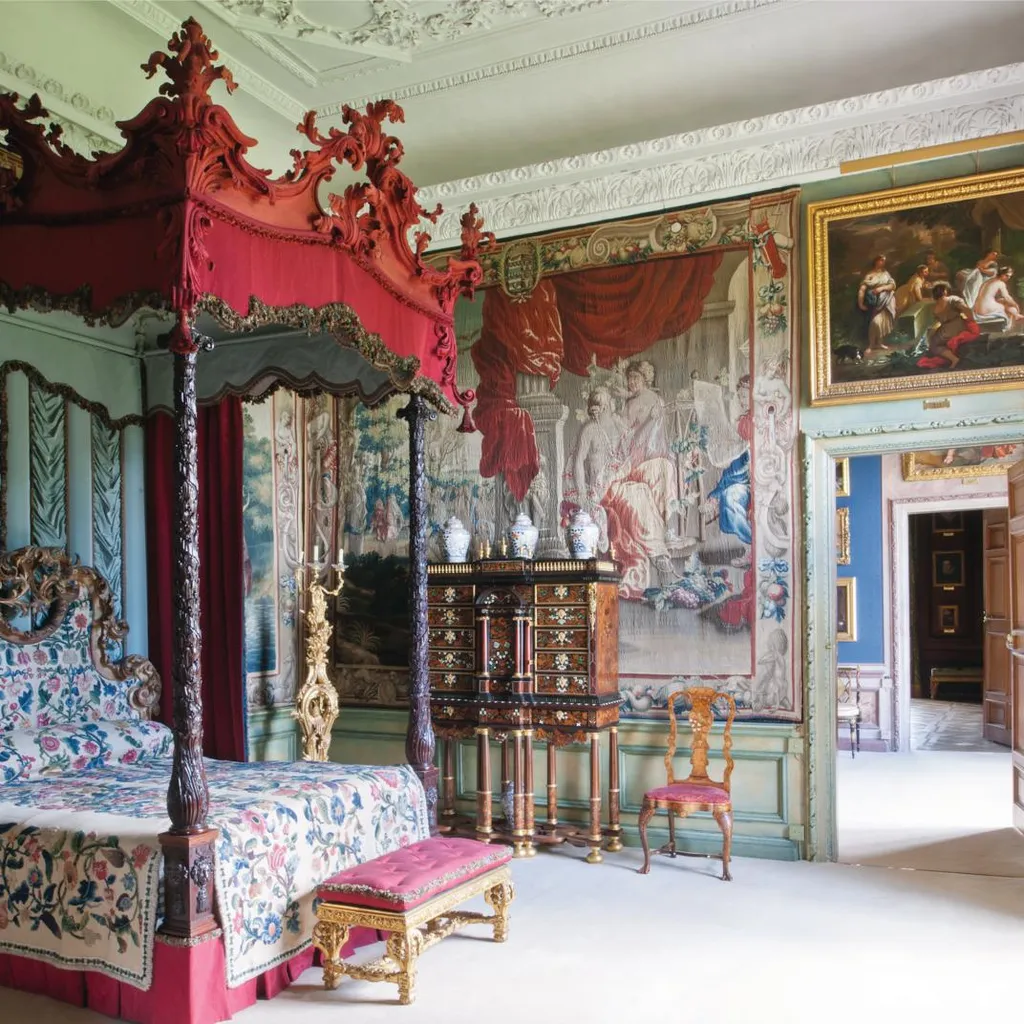The bedroom is regarded by many as an intensely personal space in which to rest and relax and generally escape the pressures of the outside world. But this concept of the bedroom as a private sanctuary or refuge is relatively new; the room itself didn’t really exist for most people until the 1500s.

In medieval times, entire households would simply bed down together on sacks of hay in the space in which they lived and dined. The relative safety and warmth delivered by this communal arrangement more than made up for the lack of privacy. Only the very wealthiest could afford a bed, and the room in which it was housed was also used for socialising, so it remained very much a public space.
‘The transition of this room from public to private space is a really interesting part of the history of the bedroom,’ says Deborah Sugg Ryan, Professor of Design History at the University of Portsmouth and consultant historian on the BBC series A House Through Time. ‘It’s a key part
of the history of the bedroom.’
You might also like what to watch on TV if you love antiques and interiors
The curtains that surround the classic four-poster bed were introduced in the early 16th century, she explains, adding that the bedchambers of Britain’s richest and most important people were a place for entertaining and carrying out business, and at night servants often slept in here too. All of which meant the occupants needed a means of shutting out the wider world. ‘The drapes around the bed offered privacy within the more public space,’ says Deborah. ‘So it becomes a sort of room within a room.’ And privacy wasn’t the only benefit: ‘We also have to think about how houses were heated in the early modern period,’ she says, pointing out that the curtains around a bed would not only keep out prying eyes, but also hold the draughts at bay in big, open, unheated rooms.

Although such beds remained the preserve of the rich (becoming increasingly lavish to showcase the wealth and status of their owners), by the 16th century many ordinary families had a bedroom within their home, though it was still a shared space with little privacy. Various public occasions would be held in the bedchamber, including births, which were seen as social events, presided over by neighbours and local women.
It’s not until the 17th century that we encounter the forerunner of the modern bedroom in the French concept of the ‘closet’ – a small, private room attached to the more public bedchamber – an idea that was soon adopted by the well-to-do in Britain. The idea of bedroom privacy soon filtered down to the burgeoning middle classes. By the time of the Georgian urban housing boom, doors had become a feature of bedrooms and servants slept elsewhere.
You might also like bedroom wallpaper ideas: 11 ways to update your bedroom decor
Of course, even as bedrooms began to be seen as private places, wealth and class meant that huge differences prevailed in the room’s use. While rich Victorian industrialists were building bigger houses and incorporating bedrooms with more of an emphasis on privacy, this wasn’t the experience for everyone. ‘If you were from a working-class background, you often wouldn’t have a separate bedroom. Your bed may be in a bed nook in the room that you’re living in,’ explains Deborah. Back-to-backs and Victorian terraces would often see large families in one small home and several children sharing a bed.
The bedroom as we understand it today only really emerged in the 1930s, when the addition of armchairs and desks reflected its gradual evolution into a place to read and relax in private, eventually becoming the versatile private space we take for granted today. In fact, bedrooms may now be at the point of another new chapter in their story, as Deborah points out: ‘For many people, especially since the pandemic, bedrooms have also become working spaces. And we all have mobile phones, so our bedrooms are networked and no longer that retreat from the outside world. We’re at this interesting moment when the bedroom is changing again, and I think that’s fascinating.’
You might also like famous bed: historic beds of note around the UK
Bedroom decor through the centuries
From simple to sumptuous, we chart the changes...
• In past times, when bedrooms were effectively public places, spending huge amounts of money to decorate the room was a chance to demonstrate wealth and power – and beds were duly status symbols worth eye-watering sums. This can be seen in the increasingly lavish state beds enjoyed by royalty, especially around the 17th and 18th centuries (see page 40).
• As the bedroom became a more private space, those with money and status began to pay less attention to its decoration, focusing on the public areas, such as hallways and drawing rooms instead.
• Around the mid-19th century, aesthetic attention returns to the bedroom – this time enhancing the room as an intimate space, rather than for show. The Industrial Revolution meant materials for beds and bedding could be mass-produced and became less expensive to buy, while events such as the Great Exhibition of 1851 helped to fuel the demand for homeware and furnishings amongst the middle classes.
• In the 20th century, Hollywood and the rise of mass media developed the fashions of bedroom decor still further, and today this space is perhaps the most personal reflection of our taste and style.




